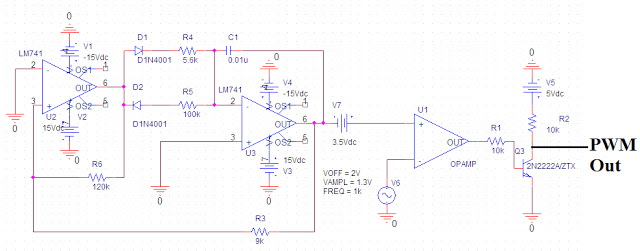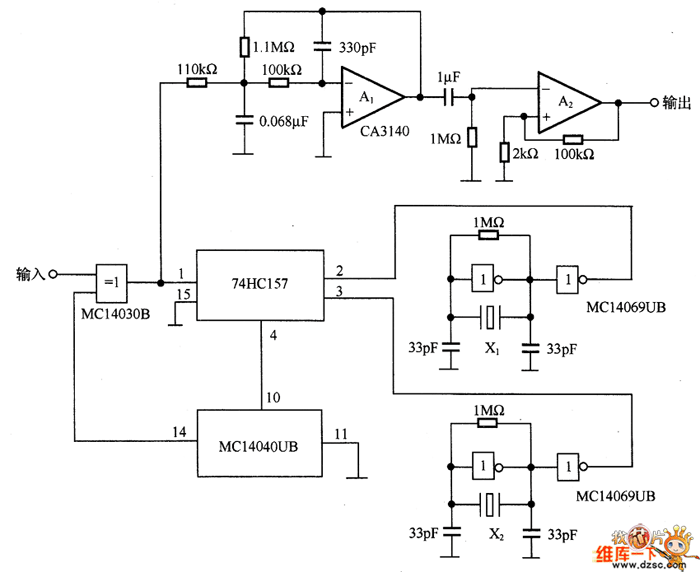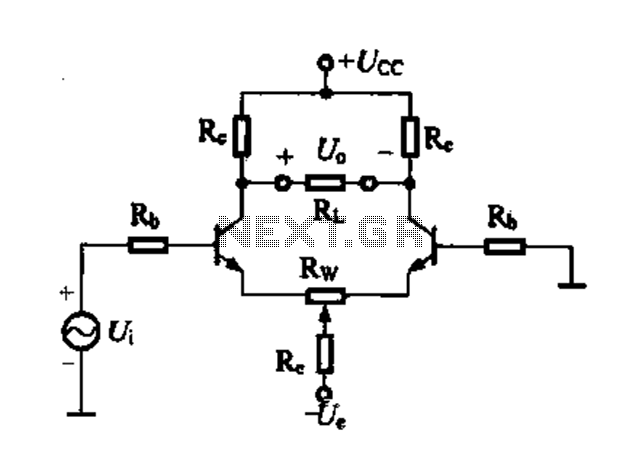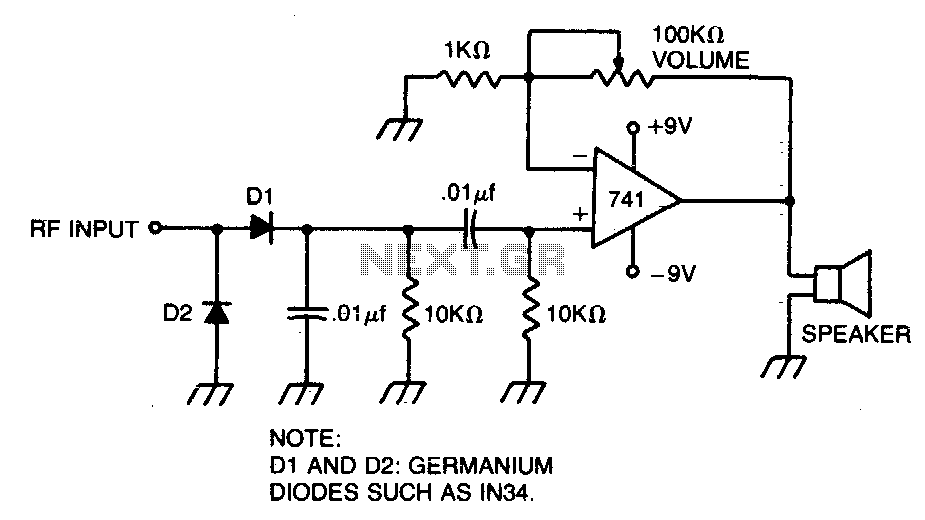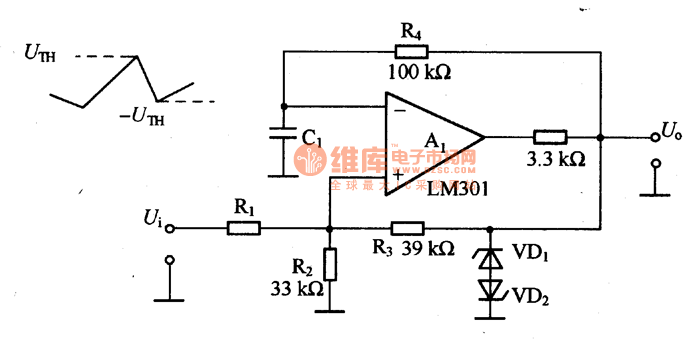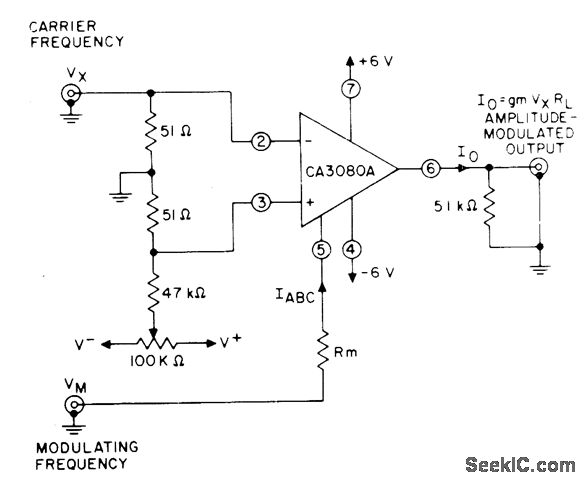
Methods for generating Amplitude Modulation
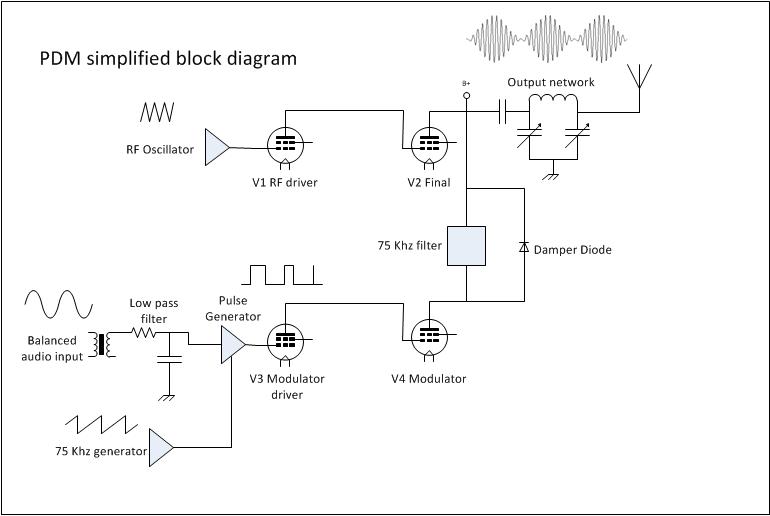
Amplitude Modulation (AM) is the first type of modulation that impressed audio onto a radio frequency (RF) carrier. Before AM, information was transmitted using on/off keying of a continuous wave transmitter, typically through Morse code or similar methods. 1. Low-level modulation: Modulation occurs in the initial RF section and is then amplified to full power in subsequent stages. This method is straightforward and easy to implement, particularly in mobile transmitters and Single Sideband (SSB) installations. However, it has disadvantages, primarily due to the necessity for linear amplification across all stages, which requires Class A or AB amplifiers and does not effectively reproduce wideband AM. 2. Doherty modulation: Developed by William Doherty, this method employs a low-level linear modulator with high efficiency. Under full carrier, the carrier tube generates the RF carrier while the peak tube remains mostly cut off. When modulation is applied, the peak tube begins to conduct, and its output is combined with that of the carrier tube through a 90-degree LC network, akin to a quarter-wavelength transmission line. This configuration reduces output impedance, allowing the carrier tube to achieve full modulation. 3. High-level or plate modulation: In this design, the RF and audio sections are developed separately within the transmitter and then combined in the final stage. Older systems utilized a modulation transformer. This approach allows all amplifiers to operate in Class C or higher, reducing electrical consumption and power supply requirements. It also enables higher power levels and better reproduction of wideband audio compared to low-level modulated units. However, it requires a larger audio section, occupies more space, and is less efficient than more modern modulation methods. 4. Ampliphase: This phase-modulated system, developed by RCA, produces two RF signals in the final stage that are 135 degrees apart. To modulate the signal, the phase relationship between the carriers is adjusted; closer to 180 degrees indicates a negative peak, while closer to 90 degrees indicates a positive peak. Ampliphase transmitters are more efficient and compact than traditional plate-modulated transmitters but require careful setup to minimize distortion, earning them the nickname "amplifuzz" from some engineers. 5. Pulse Density Modulation (PDM) or Pulse Width Modulation (PWM): This high-level modulation scheme features slight variations. Carrier power and modulation levels are determined by a PDM encoder card, with Harris transmitters operating at a PDM frequency of 75 kHz. The carrier amplitude is set by the PDM waveform, while modulation is dictated by pulse duration. PDM transmitters require power supply voltages approximately twice that of standard high-level plate modulated transmitters and necessitate a damper diode to conduct B+ voltage back to the power supply during negative peaks to prevent excessive voltage rise in the power amplifier. The damper diode is often a weak link in tube-type PDM transmitters. Solid-state transmitters may also utilize this design with MOSFETs or BJTs combined in parallel to achieve the desired output power, often referred to as Class E. In this configuration, each pair of modulator MOSFETs is equipped with its own fast-acting damper diode, typically protected by a fuse. 6. Direct Digital Synthesis: This patented design from Harris Broadcast is used in their DX series transmitters. The incoming audio is sampled at either the carrier frequency or half the carrier frequency, depending on the station's band position. The solid-state power amplifier modules are switched on and off at the carrier frequency, with audio levels superimposed onto the carrier information.
The design of amplitude modulation systems encompasses various modulation techniques, each with distinct advantages and limitations. Low-level modulation is favored for its simplicity, making it ideal for mobile applications, although it suffers from linearity issues. Doherty modulation, on the other hand, enhances efficiency by utilizing a combination of tubes that optimally manage output impedance during modulation, thus improving power utilization. High-level modulation systems stand out for their ability to deliver higher power levels and superior audio fidelity, although they necessitate larger physical footprints and more complex setups. Ampliphase modulation presents a compact solution with a unique phase relationship approach but requires meticulous tuning to avoid distortion. PDM and PWM methods leverage advanced encoding techniques to achieve efficient power management, particularly in solid-state designs, while Direct Digital Synthesis represents a modern evolution in transmitter technology, facilitating precise audio sampling and modulation at high frequencies. Each of these methods contributes to the robustness and versatility of RF transmission systems, catering to diverse operational requirements and technological advancements in the field of electronics engineering.Amplitude Modulation (AKA AM) was the first modulation type to impress audio on an RF carrier. Prior to this, information was transmitted via on/off keying of a continuous wave transmitter using Morse code or some equivalent. 1. Low level modulation. The modulation is developed in the first stage RF section, then amplified by subsequent stages to full power. Simple and easy to implement, especially for mobile transmitters and SSB installations. Disadvantages come from the need for linear amplification through all the stages requiring class A or AB amplifiers and does not reproduce wide band AM well. 2. Doherty modulation. William Doherty came up with an ingenious way to use a low level linear modulator with good to excellent efficiency.
Under full carrier, no modulation conditions, the carrier tube is generating the RF carrier and the peak tube is mostly cut off (very little current). When modulation is applied, the peak tube then begins to conduct, the output of this tube is combined with the output of the carrier tube through a 90 ° LC network, which is the same as 1/4 wave length transmission line.
The effect of this is to lower the output impedance, thus allowing the carrier tube to modulate 100 percent. 3. High level or plate modulation. The RF and Audio sections are developed separately with in the transmitter, then combined in the final stage of the transmitter.
Older systems used a modulation transformer. Advantages are all the amplifiers can be run class C or greater, which reduced electrical consumption and power supply requirements. Much higher power levels are achievable with this design. These transmitters also reproduce wide band audio much better than low level modulated units. They are also extremely rugged. Disadvantages are the system requires large audio section and they take up greater area and are not as efficient as later modulation methods.
4. Ampliphase. A phase modulated system developed by RCA where the transmitter developed two RF signals in the final, 135 degrees apart. To modulate the signal, the phase relationship between the carriers is varied, more toward 180 degrees would be a negative peak and more toward 90 degrees a positive peak.
These transmitters required less space and where more efficient than traditional plate modulated transmitters. They required careful set up and tune up to reduce distortion and somewhat unfairly earned the name amplifuzz from some engineers.
5. PDM or PWM. This is also a high level modulation scheme, but with some slight variations. The carrier power level and modulation levels are set by a PDM encoder card. In Harris transmitters, the PDM frequency was 75 KHz. The carrier is set by the amplitude of the PDM wave form, the modulation is determined by the duration of the pulse. PDM transmitters require power supply voltages about twice the voltage of a standard high level plate modulated transmitters.
They also require a damper diode to conduct to conduct the B+ voltage to back to the power supply during negative peaks, otherwise the PA voltage will attempt to rise to infinity. I have found the damper diode to be the weak link in a tube type PDM transmitter. Solid state transmitters also use this design with either MOSFETs or BJT, which are then combined in parallel to generate the required output power.
This is most often called Class E or something similar. In that system, each pair of modulator MOSFETs has it`s own fast acting damper diode, usually protected by a fuse. 6. Direct Digital Synthesis. This is a patented design from Harris broadcast used in their DX series transmitters. The incoming audio is sampled at either the carrier frequency or 1/2 the carrier frequency depending on where in the band the station falls.
The solid state PA modules are then switched on and off at the carrier frequency with the audio levels imposed on the carrier information. The explanation is simple, the applicatio 🔗 External reference
The design of amplitude modulation systems encompasses various modulation techniques, each with distinct advantages and limitations. Low-level modulation is favored for its simplicity, making it ideal for mobile applications, although it suffers from linearity issues. Doherty modulation, on the other hand, enhances efficiency by utilizing a combination of tubes that optimally manage output impedance during modulation, thus improving power utilization. High-level modulation systems stand out for their ability to deliver higher power levels and superior audio fidelity, although they necessitate larger physical footprints and more complex setups. Ampliphase modulation presents a compact solution with a unique phase relationship approach but requires meticulous tuning to avoid distortion. PDM and PWM methods leverage advanced encoding techniques to achieve efficient power management, particularly in solid-state designs, while Direct Digital Synthesis represents a modern evolution in transmitter technology, facilitating precise audio sampling and modulation at high frequencies. Each of these methods contributes to the robustness and versatility of RF transmission systems, catering to diverse operational requirements and technological advancements in the field of electronics engineering.Amplitude Modulation (AKA AM) was the first modulation type to impress audio on an RF carrier. Prior to this, information was transmitted via on/off keying of a continuous wave transmitter using Morse code or some equivalent. 1. Low level modulation. The modulation is developed in the first stage RF section, then amplified by subsequent stages to full power. Simple and easy to implement, especially for mobile transmitters and SSB installations. Disadvantages come from the need for linear amplification through all the stages requiring class A or AB amplifiers and does not reproduce wide band AM well. 2. Doherty modulation. William Doherty came up with an ingenious way to use a low level linear modulator with good to excellent efficiency.
Under full carrier, no modulation conditions, the carrier tube is generating the RF carrier and the peak tube is mostly cut off (very little current). When modulation is applied, the peak tube then begins to conduct, the output of this tube is combined with the output of the carrier tube through a 90 ° LC network, which is the same as 1/4 wave length transmission line.
The effect of this is to lower the output impedance, thus allowing the carrier tube to modulate 100 percent. 3. High level or plate modulation. The RF and Audio sections are developed separately with in the transmitter, then combined in the final stage of the transmitter.
Older systems used a modulation transformer. Advantages are all the amplifiers can be run class C or greater, which reduced electrical consumption and power supply requirements. Much higher power levels are achievable with this design. These transmitters also reproduce wide band audio much better than low level modulated units. They are also extremely rugged. Disadvantages are the system requires large audio section and they take up greater area and are not as efficient as later modulation methods.
4. Ampliphase. A phase modulated system developed by RCA where the transmitter developed two RF signals in the final, 135 degrees apart. To modulate the signal, the phase relationship between the carriers is varied, more toward 180 degrees would be a negative peak and more toward 90 degrees a positive peak.
These transmitters required less space and where more efficient than traditional plate modulated transmitters. They required careful set up and tune up to reduce distortion and somewhat unfairly earned the name amplifuzz from some engineers.
5. PDM or PWM. This is also a high level modulation scheme, but with some slight variations. The carrier power level and modulation levels are set by a PDM encoder card. In Harris transmitters, the PDM frequency was 75 KHz. The carrier is set by the amplitude of the PDM wave form, the modulation is determined by the duration of the pulse. PDM transmitters require power supply voltages about twice the voltage of a standard high level plate modulated transmitters.
They also require a damper diode to conduct to conduct the B+ voltage to back to the power supply during negative peaks, otherwise the PA voltage will attempt to rise to infinity. I have found the damper diode to be the weak link in a tube type PDM transmitter. Solid state transmitters also use this design with either MOSFETs or BJT, which are then combined in parallel to generate the required output power.
This is most often called Class E or something similar. In that system, each pair of modulator MOSFETs has it`s own fast acting damper diode, usually protected by a fuse. 6. Direct Digital Synthesis. This is a patented design from Harris broadcast used in their DX series transmitters. The incoming audio is sampled at either the carrier frequency or 1/2 the carrier frequency depending on where in the band the station falls.
The solid state PA modules are then switched on and off at the carrier frequency with the audio levels imposed on the carrier information. The explanation is simple, the applicatio 🔗 External reference
